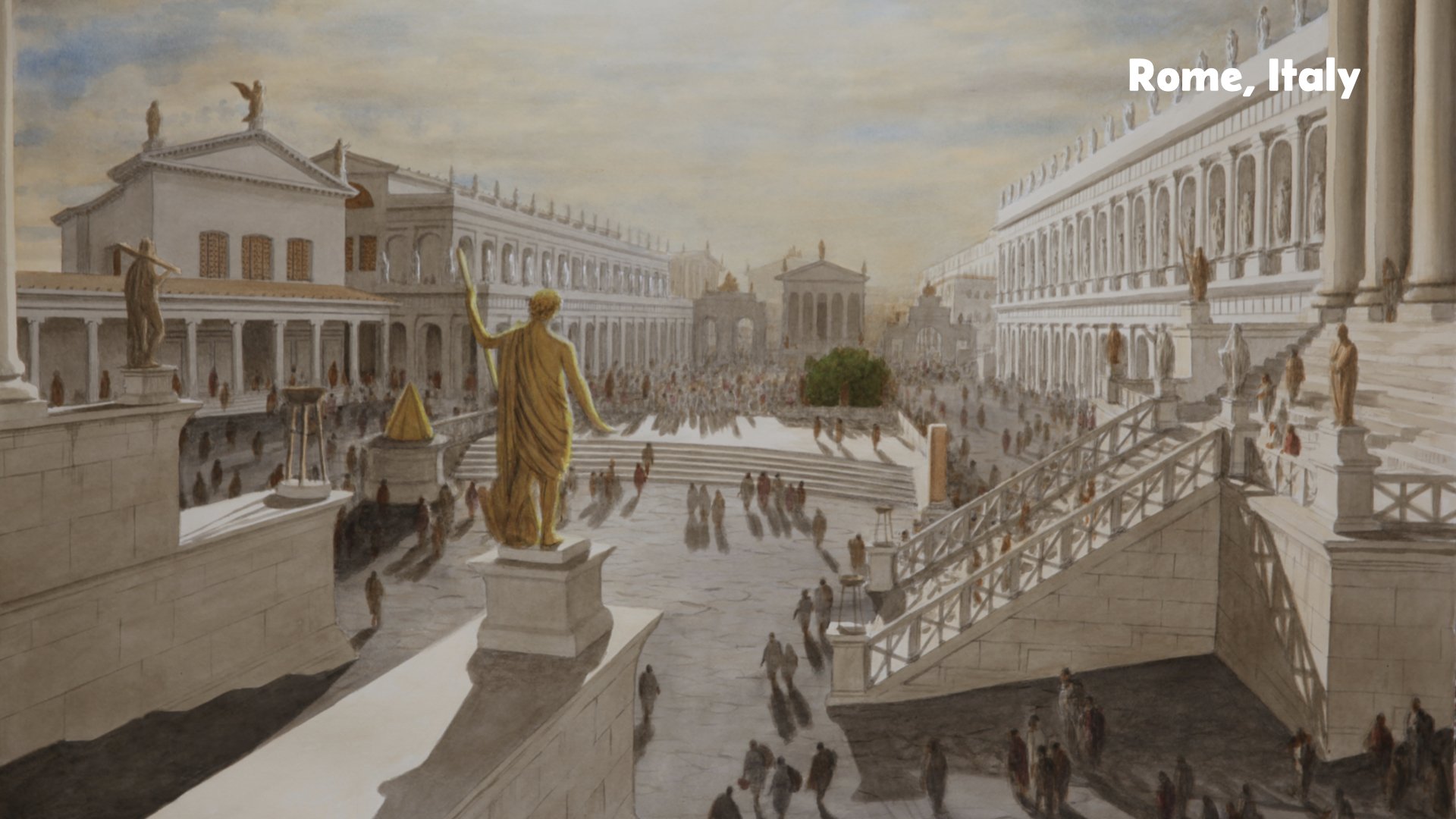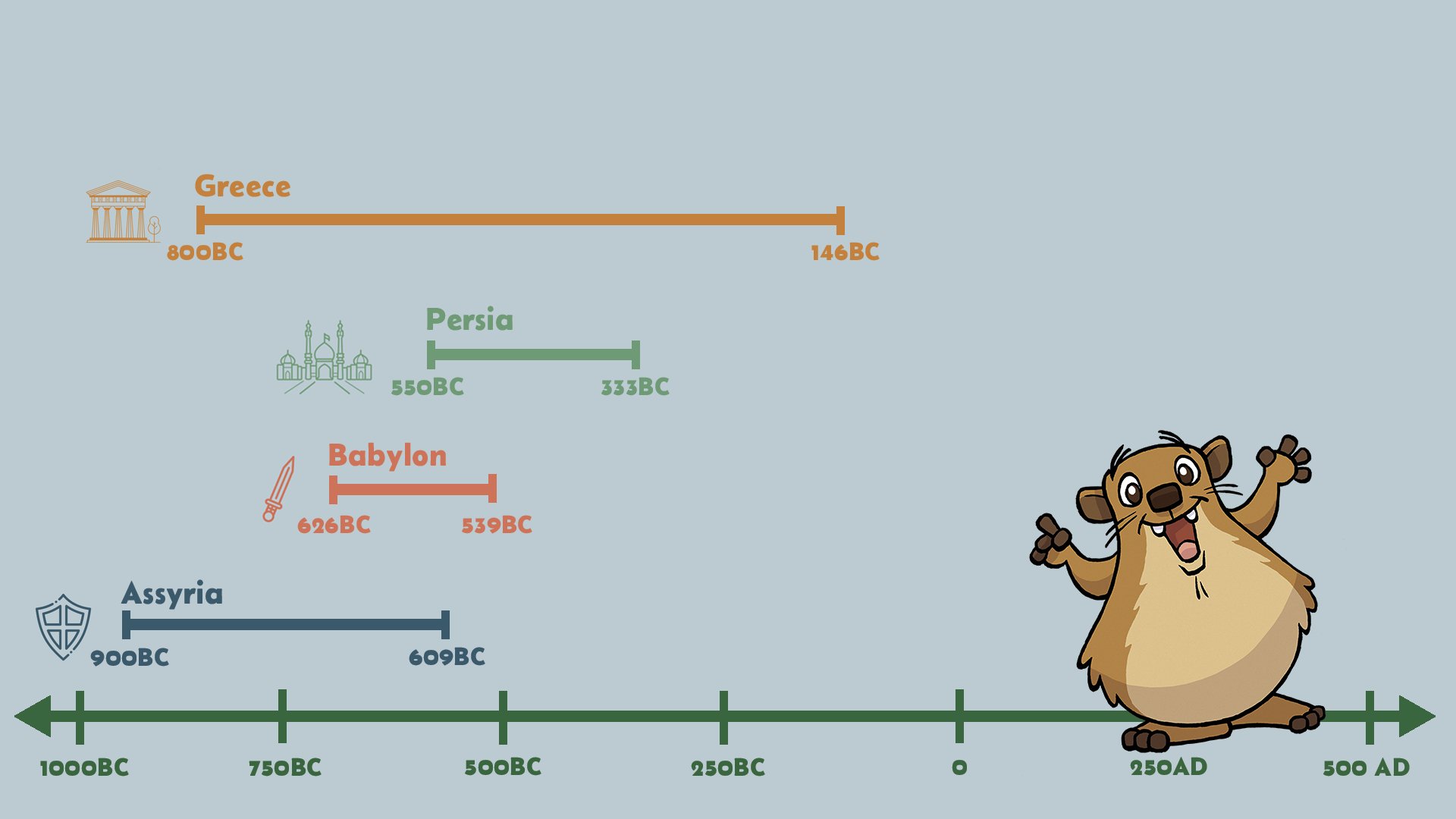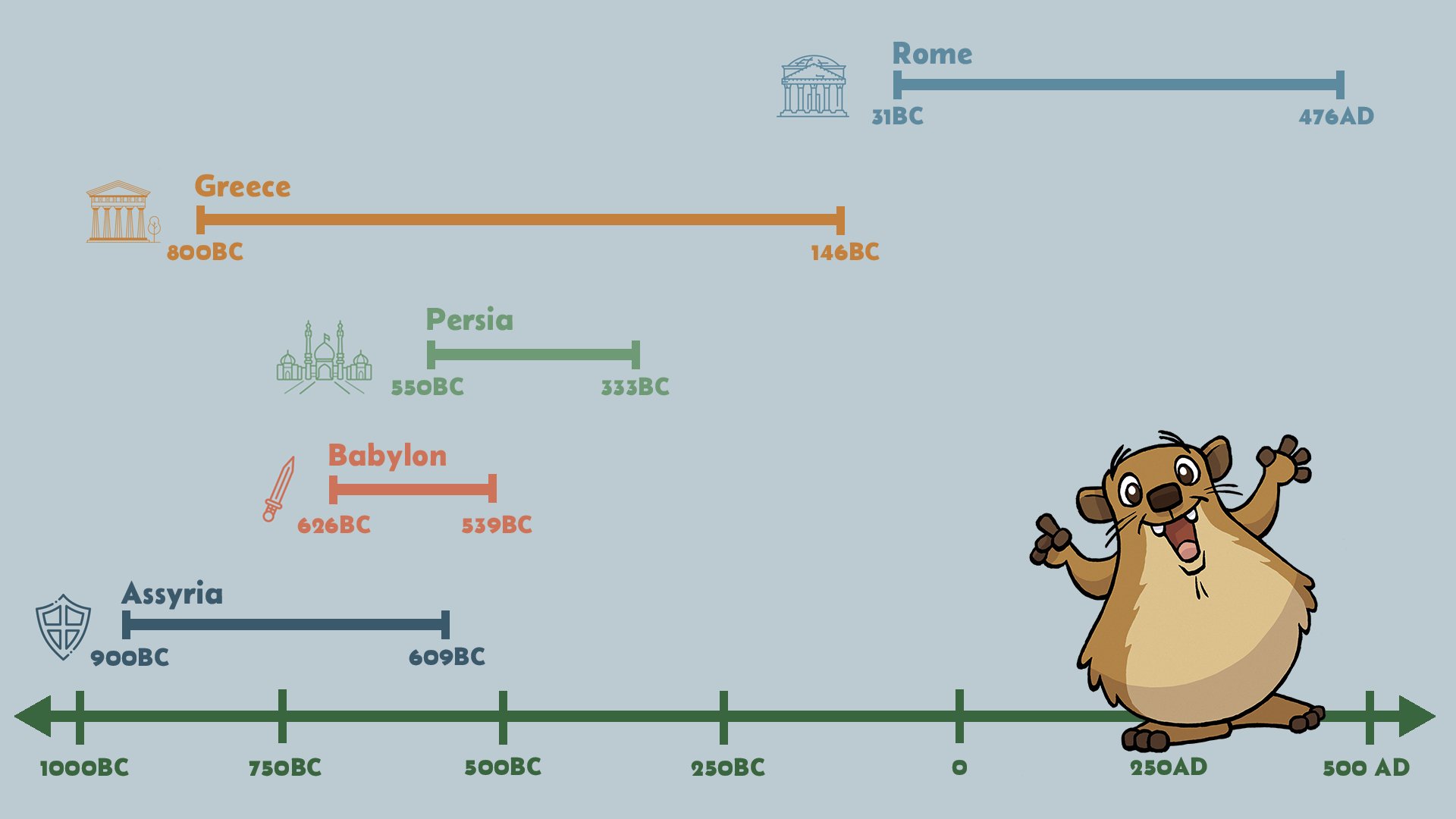LESSON INFORMATION
Unit Essential Questions:
What is the historical context of the world at the time of the kings and prophets?
What were the Empires that impacted the Biblical story?
How did the empires of the world impact God’s people?
Lesson Essential Questions:
Who were the Romans?
Bible Text:
None
Contextual Lenses:
Learning Goals:
Learners will be able to reflect on who the Romans were through the historical, cultural, geographical, and linguistic contextual lenses.
Common Core ELA:
CCSS.ELA-Literacy.RI.4.-Refer to details and examples in a text when explaining what the text says explicitly and when drawing inferences from the text.
CCSS.ELA-Literacy.RI.4.4-Determine the meaning of general academic and domain-specific words or phrases in a text relevant to a grade 4 topic or subject area.
CCSS.ELA-Literacy.RI.4.9-Integrate information from two texts on the same topic in order to write or speak about the subject knowledgeably.
CCSS.ELA-Literacy.SL.4.2-Paraphrase portions of a text read aloud or information presented in diverse media and formats, including visually, quantitatively, and orally.
Teaching Points:
The Roman Empire was the greatest Empire on earth.
The Roman Empire conquered the Greek Empire.
The Roman Empire was the backdrop for Jesus and the New Testament.
LESSON PREPARATION
What you should prepare . . .
-Set Up the Slides: Download and get the presentation slides ready to show.
-Prep the Posters: Print and laminate the posters for each station so they’re ready to use.
-Grab Supplies: Make sure you have crayons or markers for Stations 2, 3 and 4.
-Passports and Pencils: Have the students grab their passports and a pencil to use during the activity.
What you should know . . .
Empires around the world had many different historical eras and rulers. They were led by powerful kings, and many of them began as small kingdoms that took hundreds of years to grow into mighty empires.
Figuring out when these empires began and ended isn’t always easy. Some timelines are clearer because these empires were conquered in famous battles. However, their influence is harder to measure. These empires shaped the world in lasting ways and inspired those that came after them.
The capitals of these empires often changed over time, but in this study, we’ll focus on the time periods, capitals, and kings that connect to stories in the Bible. This unit will help you better understand the world of kings and prophets of the Bible and the history that surrounded them. Let’s dive in and start exploring!
LESSON INTRODUCTION
Get Ready to Travel Back in Time!
Today, we’re going on an exciting journey to explore the Roman Empire! (Slide 1: Persia) Do you have your passports ready?
(Slide 2: Kingdoms Graphic) The Roman Empire is the last of five empires we’ll visit on our adventure. The others are Assyria, Babylon, Persia, and Greece. Each of these empires played an important role in the Bible’s story, and together, they help us understand the world of the kings and prophets.
As we learn about these empires, we’ll add them to a timeline. (Slide 3: Timeline) This timeline will be the foundation for our study about the Kings and Prophets in the Bible.
To explore the Roman Empire, we’re going to look through four context lenses:
History
Geography
Linguistic
Culture
You’ll be split into four groups, and each group will visit a different station to learn about one of these lenses.
Are you ready to begin this adventure? Grab your passports, and let’s travel back to the time of the Roman Empire! (Slide 4: Roman Empire Slide)
ENGAGING WITH CONTEXT
Activity: Exploring the Roman Empire
Setup:
Divide learners into four groups and assign each group to a station. Each station will focus on a different aspect of the Roman Empire through a lens of context. Learners will use their passports to record what they discover. Set a timer for 5 minutes. When time is up, groups rotate to the next station.
Station 1: History (5 minutes)
Let’s discover the story of the Roman Empire!
Read Together: Start by reading the information provided about the Roman Empire.
Timeline Activity:
Open your passport to the timeline section.
Mark when the Roman Empire began and ended.
Draw a line connecting these dates to show how long the empire lasted.
Word Puzzle:
Use the clues in your passport to solve the crossword puzzle. Work as a team to find the correct answers based on the reading.
The Roman Empire
The Roman Empire began as a small, unimportant town on one of seven hills in Italy, a land that stretches into the Mediterranean Sea. Over time, the city grew to cover all seven hills and eventually became one of the most powerful empires in history.
The Romans learned many things from the Greeks. They also adopted Greek gods, giving them Roman names and created myths and legends about them. As the empire expanded, the Romans became famous for their incredible building projects, including a system of roads that connected the empire and aqueducts that brought fresh water into their cities. The Romans were also known for their love of violent entertainment, particularly gladiator matches where people fought to the death.
Their government started as a republic, led by two elected consuls who shared power for one year. However, Julius Caesar sought supreme power, becoming famous through military victories and declaring himself dictator. After his death, his nephew Octavian rose to power, transforming the republic into the Roman Empire in 31 BC. Octavian became the first emperor and changed his name to Augustus. He ruled for much of Jesus’ life and even claimed to be a god.
The Roman Empire had a significant impact on the world, as the New Testament of the Bible took place and was written during this time. The empire grew to be one of the largest and most influential in history. However, in 476 AD, the Roman Empire fell to the Barbarians, marking the end of its reign.
Puzzle Questions and Answers:
Down:
The government started as a ____________.
In 476 AD, the Roman Empire fell to the ____________.
____________ Caesar declared himself a dictator.
The Roman Empire began on one of seven hills in ____________.
Across:
Romans built ____________ that brought fresh water into the cities.
Romans loved to watch ____________ matches where people fought to the death.
The Romans became famous for building a system of ____________ that connected the Empire.
The ______ ______________ of the Bible took place and was written during the Roman Empire.
Station 2: Geography (5 minutes)
The ancient Roman Empire started as a small town on the peninsula called Italy. A peninsula is a piece of land that is surrounded by water on three sides. The Roman Empire grew to include most of Europe, North Africa, and the Middle East. It was one of the largest empires in history. The capital of the Roman Empire was the city of Rome.
Find Your Home and Italy:
Look at a globe or map. Can you find where you live?
Now, find Italy. That’s where the Roman Empire began.
Color the Roman Empire:
On the map in your passport, color in the area where the Roman Empire once ruled. Use bright colors to show how big it was!
Station 3: Linguistic (5 minutes)
Let’s learn about the language and art of the Romans. Latin was the official language of the Roman Empire, and most Romans spoke and wrote in Latin. However, in the part of the empire where the Bible stories took place, many people still spoke Greek. Educated Romans, including emperors, often spoke both Latin and Greek. Jesus would have likely spoken Hebrew, Greek, and Aramaic (a language that originated with the Assyrians) and might have been familiar with Latin as well.
Roman statues often had inscriptions carved into the stone to tell a story. These inscriptions would record the name of the person in the statue or explain what the statue represented. Statues were commonly made to honor artists, athletes, and politicians.
Write in Latin.
Use the Latin alphabet to write your name on the base of the statue.
Create your own statue.
Draw a statue of yourself doing something you love. When ancient Romans see your statue, they’ll learn something special about you!
Station 4: Culture (5 minutes)
Let’s dig into the past through artifacts. Archaeologists are like detectives of history. They learn about ancient empires and the people who lived in them by studying special objects, called artifacts, that are buried in the ground. These artifacts tell us amazing stories about life long ago.
Read through the artifact posters together.
Pick an Artifact:
Choose one of the artifacts described in the reading.
Look closely at what makes it special and imagine what it was used for.
Draw It:
In your passport, draw a picture of the artifact you chose. Be creative and add lots of detail!Write One Cool Fact:
Write down one interesting thing you learned about the artifact.
Silver Denarius: The silver denarius was the most important silver coin in ancient Rome. A denarius was worth about a day’s pay. This coin features the Emperor Tiberius and it was in circulation at the time of Jesus.
Caesar Augustus Statue: This marble statue is Augustus, the first emperor of Rome. It was found in the ruins of a house that belonged to his wife, Livia, in Rome. Augustus was the nephew of Julius Caesar and became the first emperor to rule the Roman Empire. His outstretched arm represents his role as a military leader and orator. Augustus believed that he was a God and should be worshipped like a God.
Roman Aqueducts: Roman aqueducts were incredible systems of pipes and bridges designed to carry fresh water from natural sources, like springs, to cities. These structures used gravity and the natural slope of the land to keep the water flowing. Aqueducts were one of the most important engineering achievements of the ancient world, providing clean water for drinking, bathing, and farming, which helped Roman cities grow and thrive!
EXPLORE THE STORY
(Slide 5: Timeline-Rome)
Gather learners together and ask if they discovered the dates marking the Roman Empire. Bring the timeline up on a screen. Spend a few minutes discussing learner’s discoveries. Possible wondering questions/starter points:
What was the most interesting thing you learned today?
If you could visit the Roman Empire, what would you want to see or do?
What surprised you the most about the Roomans?
What connection did the Roman Empire have to the Bible?
RESPOND TO THE STORY
Passports Stamps:
When learners finish filling out the information in their passports, celebrate their achievement by adding the empire’s stamp inside. This stamp shows they’ve “explored” the Roman Empire and learned all about it. Great job, explorers!
Lesson Files Include:
Lesson PDF
Presentations Files (Keynote, Power Point, Google Slides)
Station Posters
Passport Printout
Passport Stamp Printout
Passport stamp sticker sheets coming soon!
Contact info@lovegodloveothers.com if you are interested in trying out this unit with your students!











